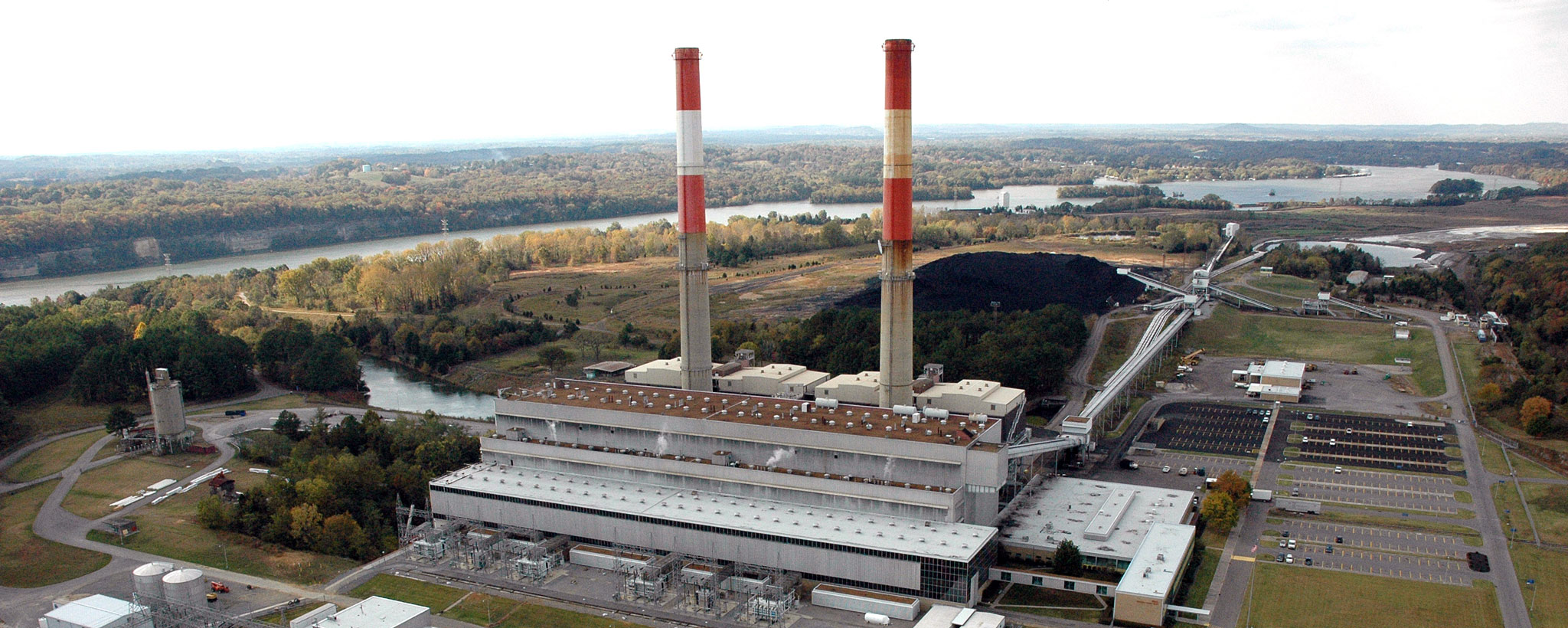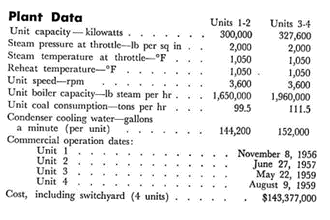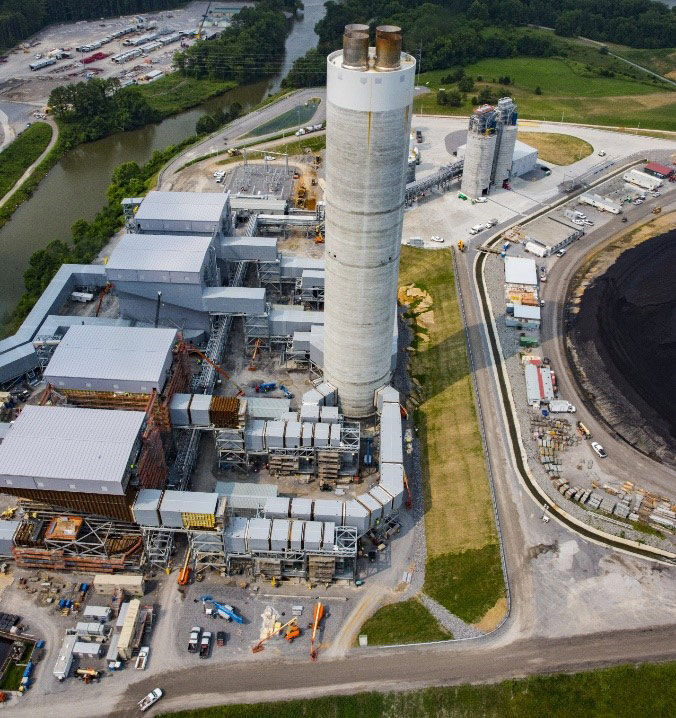
Gallatin Fossil Plant
TVA's Gallatin Fossil Plant is located on 1,950 acres on the north bank of the Cumberland River in Sumner County, Tennessee. It is named after the nearby town of Gallatin. It’s also located next door to TVA’s Gallatin Combustion Turbine Plant.
Gallatin Fossil Plant has four turbogenerating units, each with an output of 240-280 megawatts and a combined summer net generating capacity of 976 megawatts. The plant generates approximately 4.7 billion kilowatt-hours of electricity a year – enough to power 571,000 homes.
Gallatin employs approximately 150 area residents to safely provide affordable, reliable electricity and make life better for the people of the Valley.
History
Gallatin Fossil Plant, also referred to as Gallatin Steam Plant, is the eighth steam-electric project built by TVA. It cost more than $143 million to construct all four units.
The initial appropriation for the Gallatin Fossil Plant, Units 1 and 2, was provided by Public Law 547, 82d Congress, the Supplemental Appropriation Act, 1953, which President Harry S. Truman signed on July 15, 1952. Funds for completing Units 1 and 2 were provided in the subsequent appropriation acts. Groundbreaking occurred May 11, 1953.
TVA used power revenues in fiscal year 1957 to begin construction of Unit 3 and to place orders for Unit 4. Power proceeds financed the completion of both units.
The first of the four turbogenerators went into operation on Nov. 8, 1956, the second on June 27, 1957, the third on May 22, 1959, and the last on Aug. 9, 1959.

An excerpt from a 1970s brochure on the Gallatin Fossil Plant.
Community Involvement
Gallatin Fossil Plant has a long-standing partnership with Operation Stand Down, where employees voluntarily donate clothing items to veterans on an annual basis. In addition, the plant has supported Empowering Working Women and the local food bank with donations in the past year.
Aligning with TVA’s mission of service, Gallatin’s team members support local communities – and this includes cultivating education by supporting students through the Urban League of Middle Tennessee as well the local Gallatin Chamber of Commerce.
Facts & Figures
- Gallatin Fossil Plant has four turbo generating units
- The plant has a summer net generating capacity of 976 megawatts
- The plant generates approximately 4.7 billion kilowatt-hours of electricity a year, enough to supply 570,960 homes
- Groundbreaking occurred on May 11, 1953
- Power proceeds financed the construction of Units 3 and 4
- Gallatin Fossil Plant burns approximately 10,000 to 12,500 tons of coal each day.
Protecting the Environment
Since the 1950s, TVA has worked to reduce environmental impacts from burning coal. TVA specialists continuously monitor air and water quality to ensure the health and safety of the public.
Gallatin Fossil Plant burns approximately 10,000 to 12,500 tons of coal each day to provide the electricity this region needs. Once used, the coal is safely removed and stored in TVA’s state-of-the-art facilities.
In 2018, TVA invested approximately $1.2 billion in equipment to reduce emissions at the plant, including the installation of a selective catalytic reduction system designed to remove up to 86% of nitrogen oxides from the flue gas leaving the plant.
In 2017, scrubbers – an informal name for a flue gas desulfurization system that removes up to 96% of sulfur dioxide emissions – were installed on all four units. In addition to existing environmental protections, approximately 99% of particulate emissions are removed from everyday plant exhaust.
In 2020, TVA invested $70 million to install a new dewatering facility, which removes water from the spent coal ash. The ash is then excavated, removed and transported for beneficial reuse or disposal. Prior to this new system, TVA used an integrated flow management system.

Completed emissions control systems at Gallatin Fossil Plant.
To learn more about how TVA handles coal ash, click here.